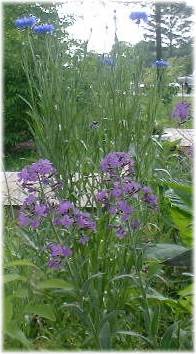|
Gardens Ablaze |
||
|
|
Dame's Rocket |
Personalized Engraved Garden Stones Custom engraved stones and rocks at SerenityHealth. Many sizes and fonts to choose from. |
|
Detailed Biennial Profiles Site Map
Home |
Dame's Rocket is an easy to grow biennial or short-lived perennial which naturalizes freely and in some areas is considered a noxious weed. In the home garden, however, this plant can be a welcome addition, providing bright color in the form of white, pinkish purple, or violet purple flowers, on tall, sturdy plants that hold up to all but the strongest winds. It forms a clump in the first year, then bursts into bloom in the second, making the wait very worthwhile. One must get close to it during the day to find the fragrance, but at night it releases a delicious scent into the air that can be detected from a good distance. Bees and butterflies love the sweet smell and bright color of the plant, making it a wonderful addition to habitat type situations.
Custom Search
|
|
|
Gardens Ablaze |
||
 Dame's
Rocket, pictured here against a backdrop of tall Bachelor's Buttons, is
a delightful upright
Dame's
Rocket, pictured here against a backdrop of tall Bachelor's Buttons, is
a delightful upright 